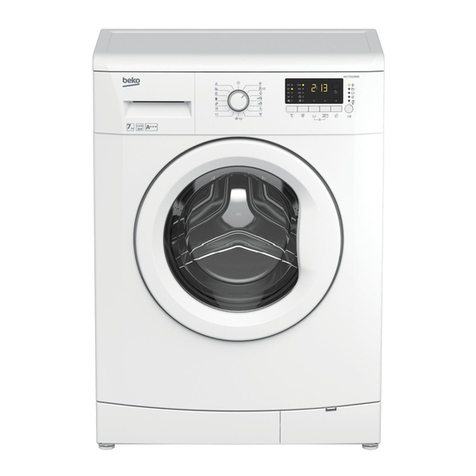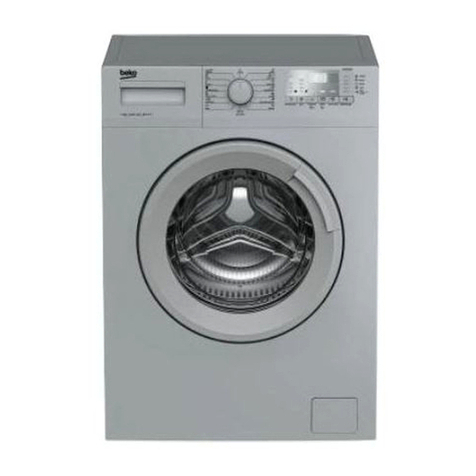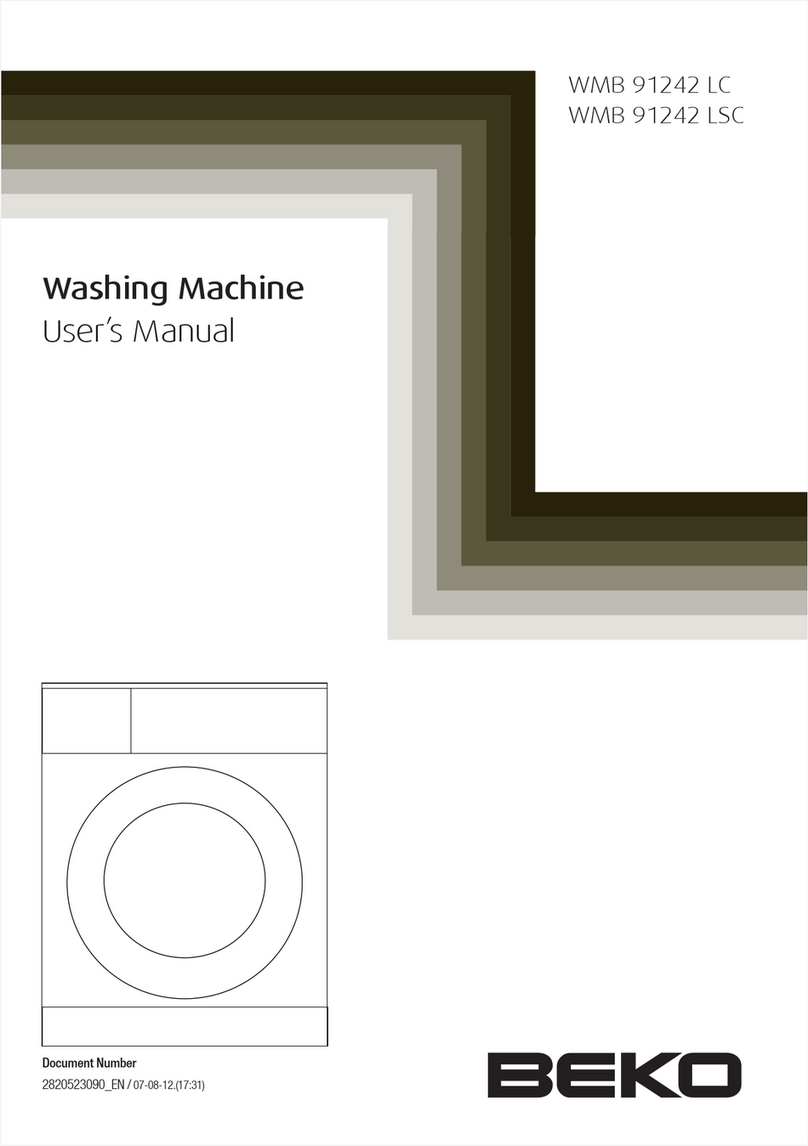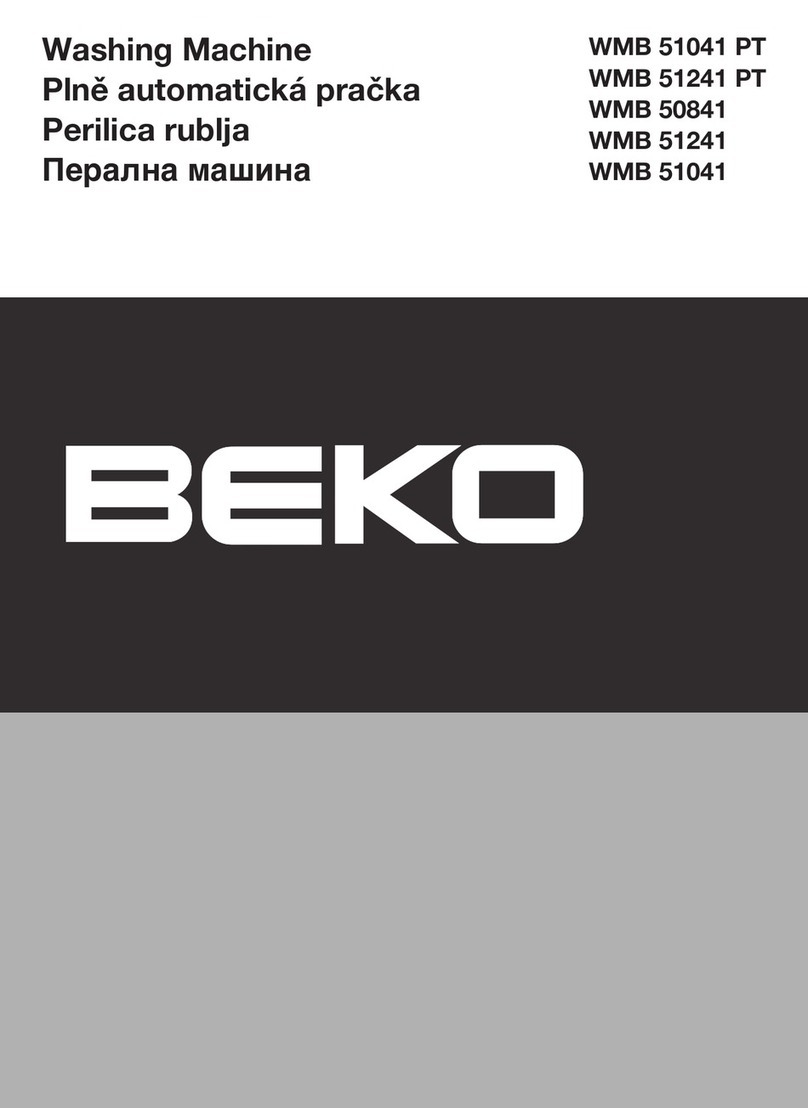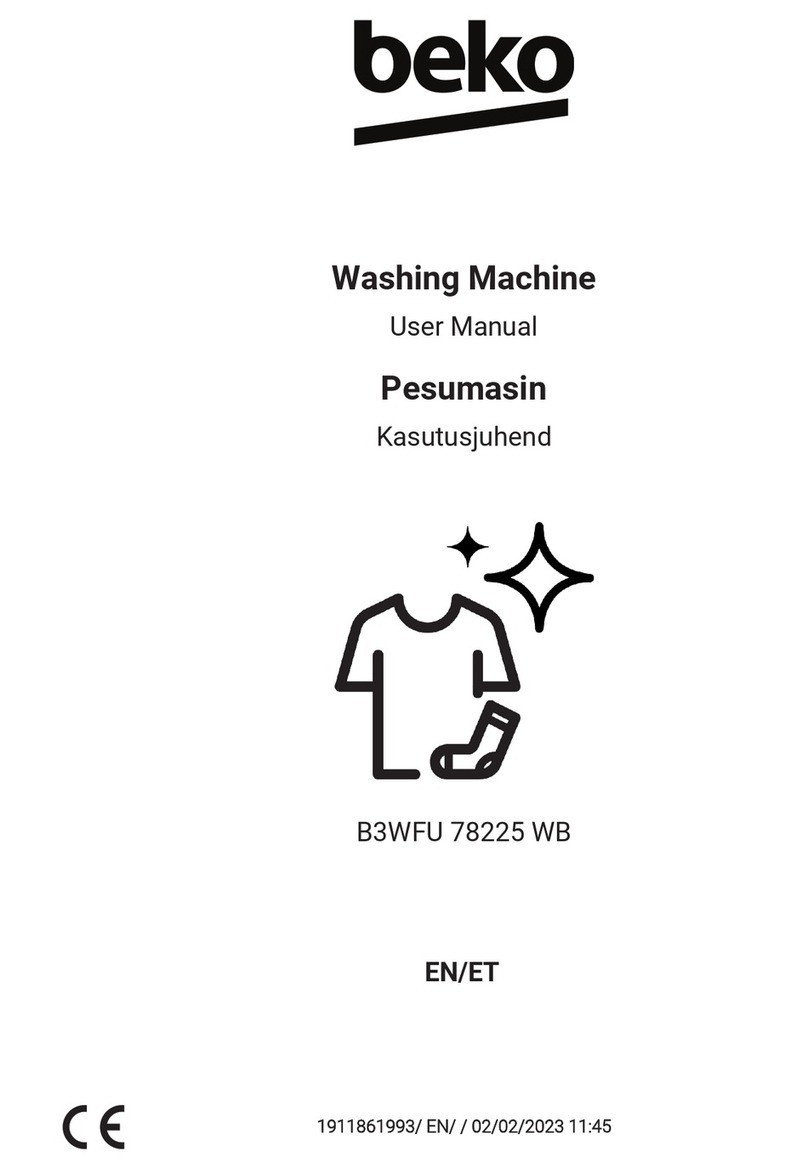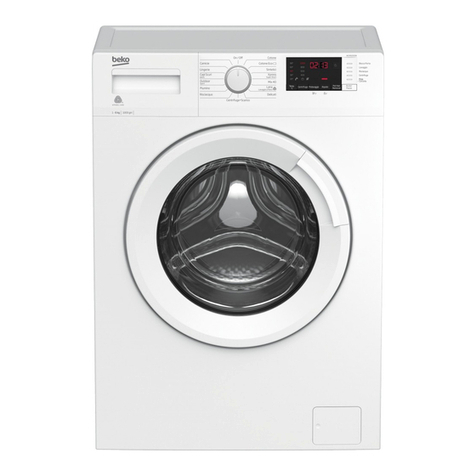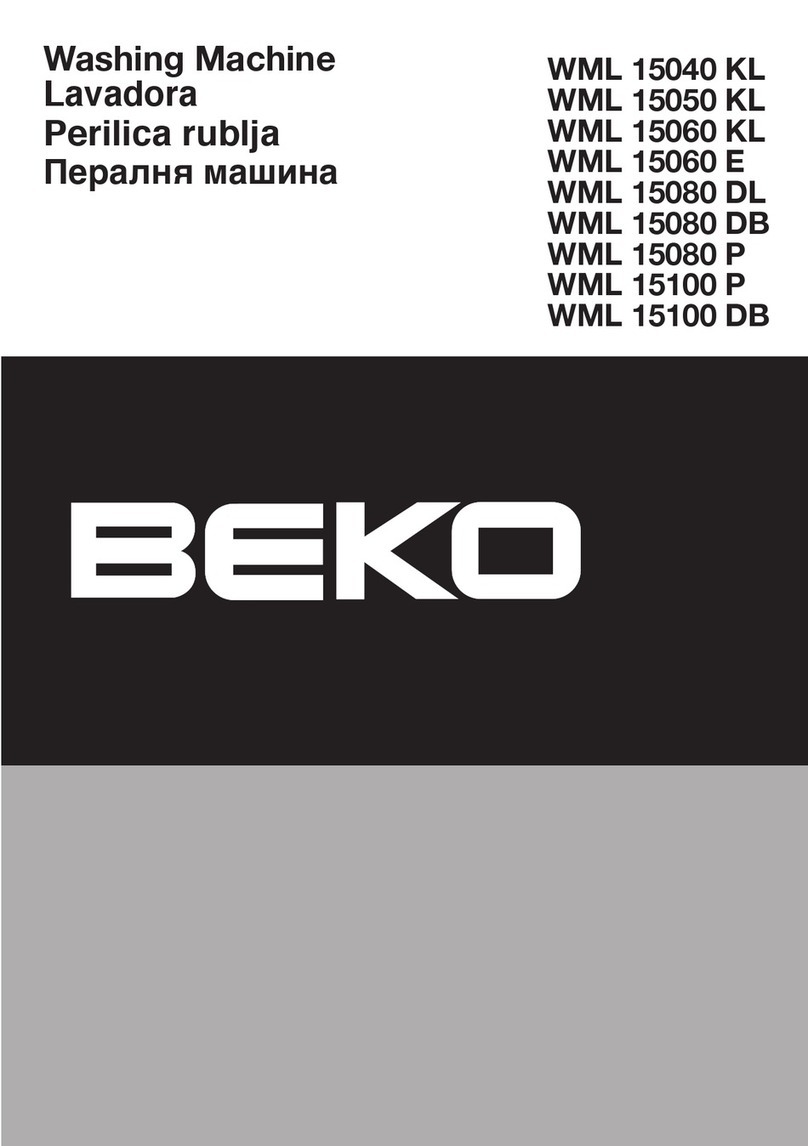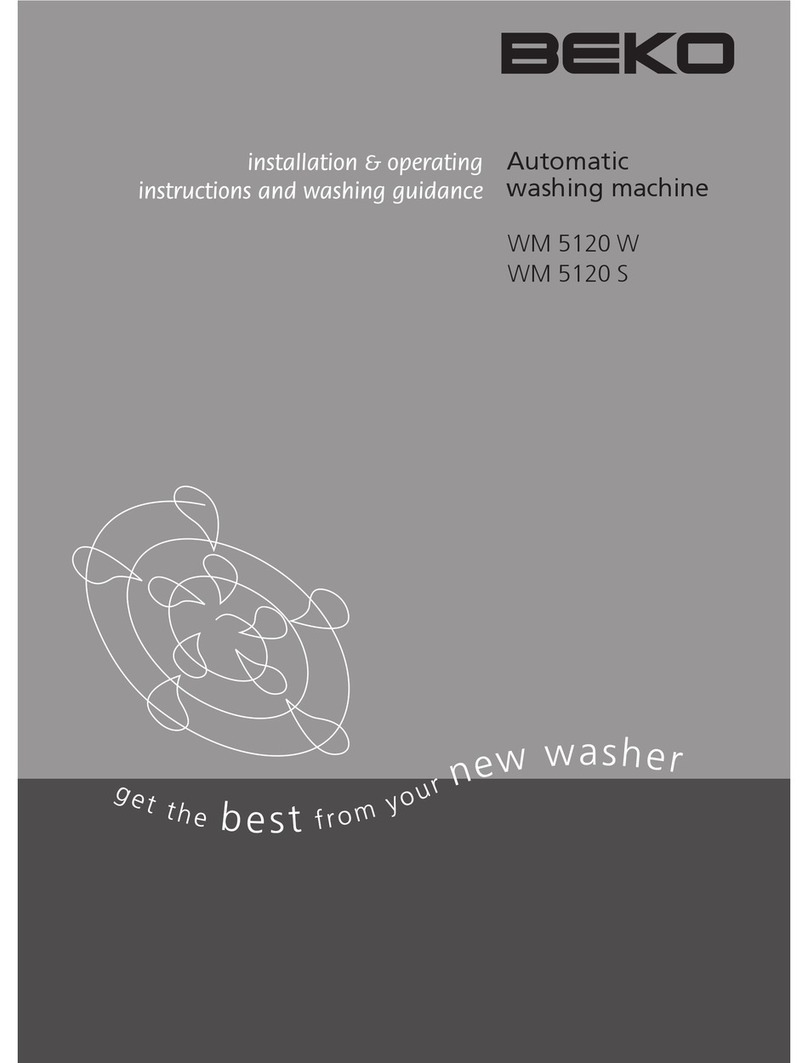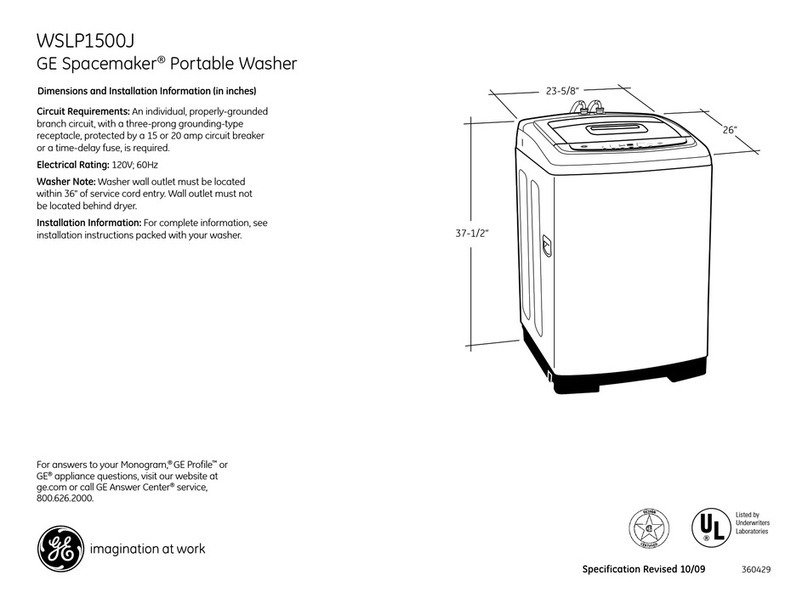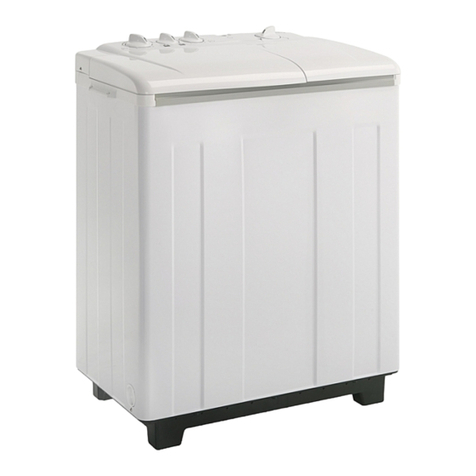
9 / EN Washing Machine / User’s Manual
• Operate the product in the highest
capacity allowed by the programme you
have selected, but do not overload; see,
"Programme and consumption table". See,
“Programme and consumption table"
• Always follow the instructions on the
detergent packaging.
• Wash slightly soiled laundry at low temperatures.
• Use faster programmes for small quantities
of lightly soiled laundry.
•
Do not use prewash and high temperatures
for laundry that is not heavily soiled or stained.
• If you plan to dry your laundry in a dryer,
select the highest spin speed recommended
during washing process.
•
Do not use more detergent than the
recommended amount specified on its package.
4.2.4 Loading the laundry
1. Open the laundry cover.
2. Put the laundry items into the machine in a
loose manner.
3.
Push and close the loading cover until you
hear the locking sound. Ensure that no items
are caught in the door. The loading door is
locked while a programme is running. The
door can only be opened a while after the
programme comes to an end.
4.2.5 Correct load capacity
The maximum load capacity depends on the
type of laundry, the degree of soiling and the
washing programme desired.
Machine automatically adjusts the water
amount according to the weight of the laundry
put inside it.
A
WARNING!
• Follow the information in the
“Programme and consumption table”.
When overloaded, machine’s washing
performance will drop. Moreover, noise
and vibration problems may occur.
4.2.6 Using detergent and softener
C
INFORMATION
• When using detergent, softener, starch, fabric
dye, bleacher and decolorant, descaling
agents; read the manufacturer’s instructions
written on the package and follow the dosages
specified. Use measuring cup if available.
The detergent drawer
is composed of three
compartments:
– (1) for prewash
– (2) for main wash
– (3) for softener
– ( ) in addition, there
is a siphon piece in the
softener compartment.
Detergent, softener and other cleaning agents
• Add detergent and softener before starting
the washing programme.
• While the washing cycle is in progress, do
not leave the detergent dispenser open!
• When using a programme without prewash,
do not put any detergent into the prewash
compartment (compartment nr. "1").
• In a programme with prewash, do not
put liquid detergent into the prewash
compartment (compartment nr. "1").
• Do not select a programme with prewash if
you are using a detergent bag or dispensing
ball. Place the detergent bag or the dispensing
ball directly among the laundry in the machine.
• If you are using liquid detergent, do
not forget to place the liquid detergent
container into the main wash compartment
(compartment number “2”).
Choosing the detergent type
Detergent type to be used depends on the
fabric type and color.
• Use different detergents for coloured and
white laundry.
• Wash your delicate clothes only with special
detergents (liquid detergent, wool shampoo,
etc.) used solely for delicate clothes.
• When washing dark coloured clothes and quilts,
it is recommended to use liquid detergent.
• Wash woolens with special detergent made
specifically for woolens.
A
CAUTION!
• Use only detergents manufactured
specifically for washing machines.
• Do not use soap powder.
Adjusting detergent amount
The amount of washing detergent to be used
depends on the amount of laundry, the degree
of soiling and water hardness.



